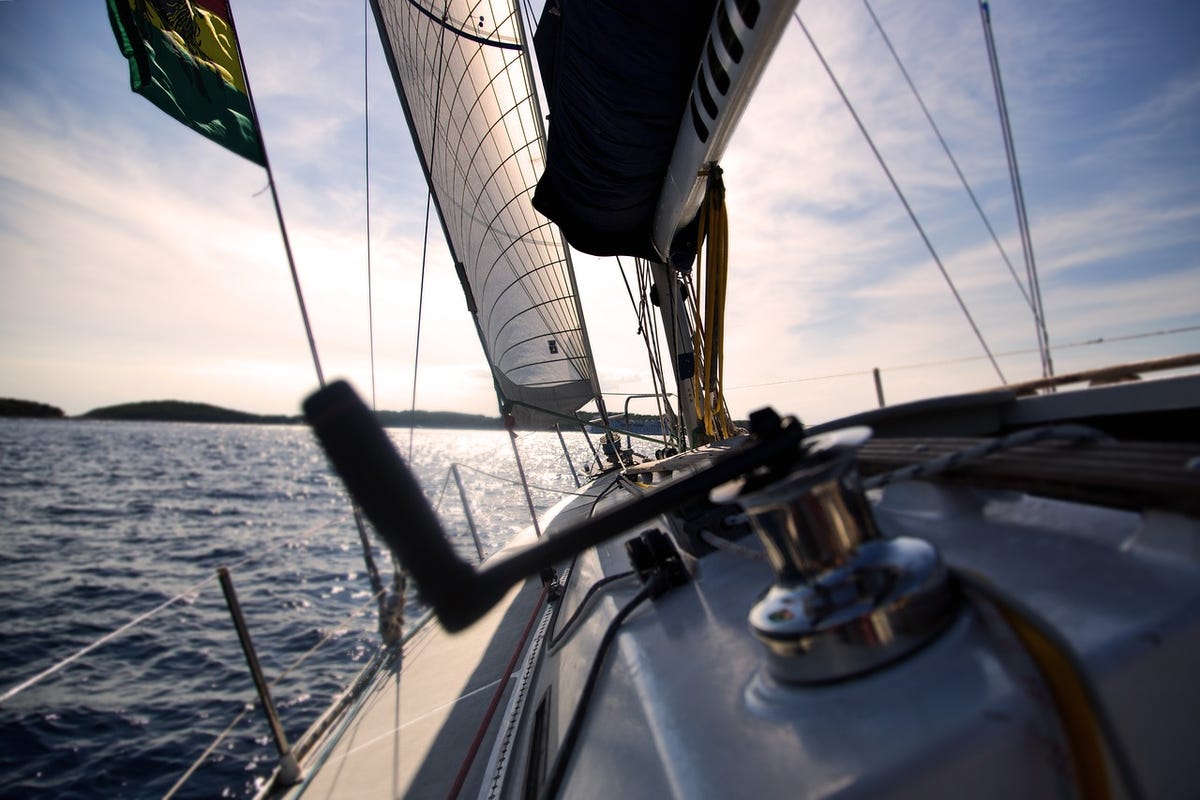
Matt Rutherford was just some days into his deliberate unaided, continuous solo-sailing journey round North and South America when he realized he’d left all his additional pants on the dock. The times of preparation earlier than setting off had been frantic and some issues received left behind. This was an issue. He was going through 309 days at sea with little human contact and his small 27-foot sailboat, which he received without cost and outfitted himself, was designed for bay crusing and never the notoriously unrelenting climate and towering seas of Cape Horn or the perilous ice of the Northwest Passage. To cap it off, he had simply spilled diesel gasoline throughout himself, the results of a leaking gasoline bladder, and he actually wished a change of garments.
Most individuals would have turned again. Rutherford, whose blue collar background and gruff presentation put him at odds with the Instagram crusing tradition that is proliferated amongst a brand new technology of seafarers, grumbled one thing underneath his breath, checked his course, and pressed forward on a visit that may safe his place within the file e book.
That 2011 journey, throughout which Rutherford gained huge respect for polar areas and for the stunning utility of small sailboats, would catalyze a mission that will appear odd in a digital world: To make use of sail energy for science, and in so doing to show that sailboats, one of many unique applied sciences that helped humanity increase its horizons, are excellent platforms for subsequent technology information assortment on the earth’s oceans.
After I did the journey round Americas, the ocean turned my residence. I used to be not visiting the ocean, I used to be dwelling at Sea. After I received again I wished to do one thing that provides again, one thing that enables me to develop and make the most of my expertise as a sailor. I wished one thing that I may work on for the remainder of my life.
Rutherford, a one-time drug vendor (he is open about that truth in interviews) who watched his childhood mates get locked up or killed one after the other earlier than deciding life had completely different plans for him, doesn’t have a science background, however on his journey across the Americas he got here head to head with the entrance strains of local weather change. “Floor zero for the observations of local weather change are within the polar areas,” he says. “That is the place you see the glaciers retreating and the ice melting.” Mixed with frequent run-ins with rubbish, it was an eye-opening expertise.
He additionally confronted a actuality that has stymied scientists for generations: These locations are phenomenally tough to traverse, significantly by way of boat. “You understand, it is uncharted, you do not know the place the rocks are and there are rocks all over, compasses do not work, the climate forecasts are rubbish, there’s ice, there’s fog, there’s polar bears that may eat your head. So it is a actually distinctive problem.”
These elements contribute to the astronomical price ticket of doing science at sea in distant areas. The typical price of a scientific analysis vessel is estimated at $25,000 per day. Within the arctic, that price ticket can double, simply reaching or exceeding $50,000 per day. Virtually with out exception scientific expeditions are achieved on energy vessels, and gasoline accounts for a considerable portion of the entire prices. It additionally limits the efficient vary and period of expeditions, which should have the ability to safely return to shore to refuel with relative consistency. That considerably limits the sorts of information assortment scientists are capable of do at sea.
In 2013, Rutherford teamed up with scientist Nicole Trenholm to discovered Ocean Analysis Mission, a 501(c)3 devoted to scientific exploration underneath sail.
We’re forging a brand new path of discovery by combining fashionable expertise with age-old effectivity to create decrease price analysis expeditions that present an efficient different to the extra expensive, massive science paradigm. ORP’s analysis aims are born from shut collaboration with scientists specializing in crucial points.
Sail energy is having one thing of a renaissance. Mounting strain to scale back carbon emissions in transport have led to renewed curiosity in wind-assisted ships. Fastened-sail propulsion designs have been proposed for quite a lot of massive ship functions. Autonomous information assortment platforms, together with underwater gliding drones and sail drones, are making their method into the trendy naturalist’s toolkit. One downside with these drones, apparently, is that although they’re small and straightforward to launch, it is costly for scientists to mount expeditions for launch and restoration, occasions that may be weeks aside.
Ocean Analysis Mission (ORP) is born from the identical spirit. The group designs distinctive expeditions that allow small, core groups of researchers to assemble important info from distant, delicate areas worldwide. Throughout an early expedition in 2013, Rutherford and Trennholm spent 70 days within the Atlantic to survey the jap facet of the North Atlantic Rubbish Patch, which at the moment was unmapped.
“One of many causes it hadn’t been mapped, and why we had been on the market so lengthy, is it’s a must to sail all the way in which to mainly the Azores earlier than you’ll be able to even begin,” says Rutherford. As any leisure sailor is aware of, that form of lengthy vary expedition is completely suited to a sailboat, which strikes slowly however inexpensively and might maintain a small crew primarily indefinitely with the correct of apparatus and meals provides.
Ocean Analysis Mission is decidedly a bootstrapped affair, in accordance with the life-style that has taken Rutherford around the globe. It’s grant and donation funded and has relied on boats which are begged, borrowed, or bartered. These are sometimes small boats initially designed for brief hops in protected waters. Rutherford and Trenholm strip them down and remake them into purpose-built analysis sailboats.
In January 2019, Rutherford was taping an episode of his podcast, Single-handed Crusing, which is a stream-of-consciousness affair that has a cult following amongst a sure sort go-it-alone sailor, when he started describing his excellent boat for ORP expeditions. After the present he received an electronic mail from a listener who knew of somebody with a 65-foot metal sailboat, precisely the type Rutherford had described. The boat was a home-build undertaking and Rutherford was understandably cautious, however when he received there he was delighted. The boat had masts put in and appeared 70% of the way in which there. ORP has been outfitting and rebuilding it ever since — an arduous course of funded by word-of-mouth donors and help of Rutherford’s podcast.
“We have to have the boat within the water early April after which we received to go away for Greenland most likely by mid-may and we have now a couple of half million {dollars} of scientific gear this time.”
That features a multi-beam sonar for mapping the ocean flooring in accordance with the UN Seabed 2030 Mission, in addition to gear to measure glacial sediment and ensuing nutrient blooms in arctic waters. ORP can even be floor truthing satellites for NASA, conducting microplastics analysis, and doing quite a lot of water sampling.
The estimated each day price of the expedition can be $3000 per 24 hours, a small fraction of a conventional analysis vessel.
Apparently, Rutherford sees a mixing of the latest and oldest applied sciences as a perfect method to information assortment. Aerial, aquatic, and submersible drones, for instance, are an ideal use case for his group’s sail expeditions.
“Absolutely autonomous information gathering robots are going to play a big position in the way forward for ocean analysis they usually’re already taking part in a much bigger larger position each single yr. These Applied sciences usually are not large and are completely supported on, say, a 65-foot boat at a fraction of the associated fee. And actually that is the place you present the true functionality of the sailboat being knowledgeable information assortment platform. It is slower in essential methods for probes and mapping the seafloor, it is rather more cost-efficient, and it is the combination of those these new applied sciences which are actually going to take off as time goes on.”
Go to the Ocean Analysis Mission web site for info on how one can help the group’s work.

